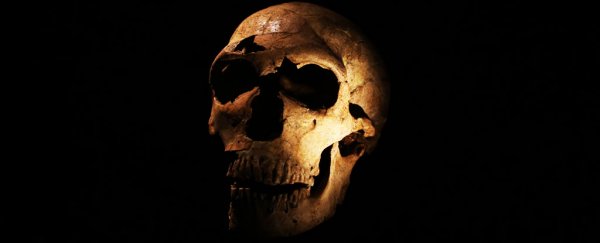While there's widespread evidence of cannibalism among humanity's prehistoric ancestors, it seems the grisly practice of consuming your fellow cave-dweller wasn't purely driven by the need for food.
According to a new analysis of the caloric content of the human body, our ancient predecessors wouldn't have offered much bang for buck from a nutritional perspective – meaning prehistoric cannibals must have been motivated by factors other than dietary requirements when they dined on one another's flesh.
"We are a fairly small animal really and we don't have much flesh and meat or fat to us, and we certainly wouldn't necessarily have done in the past either," archaeologist James Cole from the University of Brighton in the UK told The Guardian.
"Maybe there is more of a social driver here, not ritual specifically, but social."
To identify the culinary motivations for cannibals in the Palaeolithic period – lasting from around 2.6 million years back to about 10,000 years ago – Cole created a nutritional template for the human body, analysing the amounts of protein and fat contained in each body part, and converting it into calorie values.
In other words, you know that little nutrition information table you can find on practically every piece of food packaging in the supermarket? That's what he came up with for a lean male adult body weighing about 66 kilograms (146 lb).
If you were to eat this individual from head to toe, you'd consume about 144,000 calories in total, with some 32,000 calories coming from skeletal muscle, the muscle fibres responsible for body movement.
But consuming just that muscle tissue alone in other animals would provide way more calories than the entire flesh, fat, and muscles of a human.
A single mammoth would have provided 3.6 million calories derived from its muscles, whereas a bear and a horse would deliver 600,000 and 200,100 calories respectively.
In terms of energy, a human body would deliver approximately the same amount of energy as an antelope – but would have proven significantly more dangerous to catch and kill.
"You have to get together a hunting party and track these people, and then they aren't just standing there waiting for you to stab them with a spear," Cole told Erika Engelhaupt at National Geographic.
According to Cole, this means the meagre amount of energy derived from eating people just couldn't have justified eating them primarily for survival, as researchers have previously suggested.
"If you're hunting your own species, it's the same size as you and can think just as well as you and can fight back just as well as you can," he told Angus Chen at NPR.
"We aren't a great return of calories for the amount of effort."
Inevitably, the next question is why then did ancient cannibals choose to eat humans if we're such a poor source of nutrition?
Cole says there's not enough evidence to know for sure, but he thinks the reasons early humans elected to eat human flesh were borne out of specific social or cultural factors to do with their tribes and communities, such as rituals performed on dead rivals after turf wars.
"It might be: 'We've got our territory, these people are interlopers and they're trespassing on it. We need to go and sort that out,'" Cole told Bryson Masse at Motherboard.
"There would have been some kind of ritual attached to the skulls of these individuals, but the bodies were consumed as part of the cannibalism act."
In Cole's view, much as any random instances of cannibalism in the modern would could be attributed to a range of causes – whether aggression, some kind of ritual, or for survival purposes – early humans could have had the same range of reasons.
It will fall to future archeological studies to verify the hypothesis, but for now, one thing's for sure: studying cannibalism can definitely take its toll.
As Cole told National Geograhic: "I found it quite difficult to eat bacon for the last year or so."
The findings are reported in Scientific Reports.
